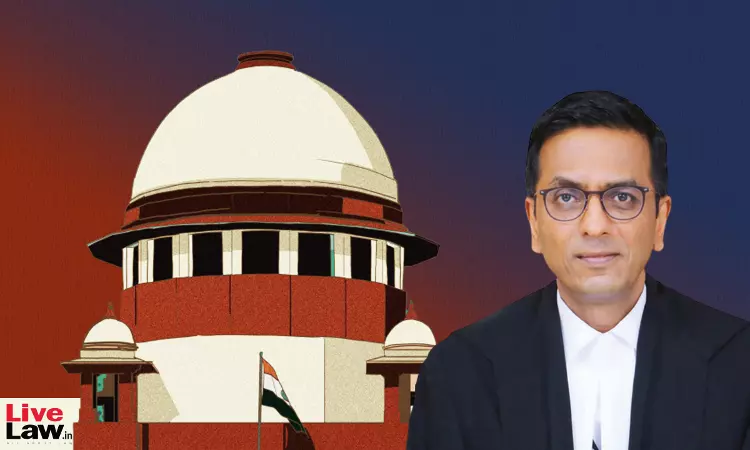- Home
- /
- Top Stories
- /
- In A First, Supreme Court Data...
In A First, Supreme Court Data Available On National Judicial Data Grid On Real Time Basis; Boost For Transparency, Says CJI DY Chandrachud
Padmakshi Sharma
14 Sept 2023 11:50 AM IST
Chief Justice of India DY Chandrachud announced today that the Supreme Court is officially 'onboard' with the National Judicial Data Grid (NJDG) now. The CJI described the onboarding of the Supreme Court data on NJDG portal under the court's 'open data policy' as a step "to bring transparency and accountability in the judicial domain."The NJDG gives real-time data regarding the pendency of...
Chief Justice of India DY Chandrachud announced today that the Supreme Court is officially 'onboard' with the National Judicial Data Grid (NJDG) now. The CJI described the onboarding of the Supreme Court data on NJDG portal under the court's 'open data policy' as a step "to bring transparency and accountability in the judicial domain."
The NJDG gives real-time data regarding the pendency of cases in District Courts and High Courts across the country. So far, the data of the Supreme Court was not available in the NJDG. Now the Supreme Court data is also available on NJDG.
The CJI described the NJDG as a flagship project of the E-Courts Mission and a 'unique and informative portal' designed to disseminate crucial information from various judicial institutions for public discourse. Developed by the National Informatics Centre in collaboration with the in-house IT team of the Supreme Court, the CJI stated that this platform was set to transform the way legal data was accessed and analyzed.
The Chief Justice stated that data from the Supreme Court will be updated on NJDG on a real time basis. He added that with just a click of a button, users could now access comprehensive information regarding the Supreme Court and its case disposals and pending cases. This information is categorized by case type, year, stage, and forum. He said–
"So at the click of a button, you can access every single information relating to the institution, disposal, and pendency of cases– type wise, year wise, stage wise, and forum wise."
The CJI also displayed for the courtroom the webpage and added–
"At a glance, the webpage give us current year's pendency of civil and criminal cases, total pendency of registered and unregistered cases. And registered cases are those which are still defected and defects are not cured by the lawyers yet."
The CJI then showed graphs on the NJDG related to the Supreme Court and said–
"You can see the number of cases in the previous months, number of cases instituted and disposed of in the current year, and coram wise pendency of cases- three judges, five judges, seven judges, and nine judges."
Furthermore, the CJI highlighted that the graphs could show impact of vacation periods on case disposals, illustrating that in the month of July 2023, 5,500 cases were disposed of, while 3,115 new cases were instituted. He said–
"We have graphs to see the effect of the vacations in July– the disposal was 5500 as opposed to the institution of 3115 cases- fresh lawyer minds and fresh judges I guess."
He stated that the NJDG also provided detailed distribution of case types and year-wise pendency data. Notably, there are less than 100 cases pending from before the year 2000, a fact that the CJI stated would serve as a valuable tool for him in reorganizing the work to prioritize the resolution of these older cases. He said–
"There are just about less than 100 cases pending before the year 2000. This gives data tool for the Chief Justice to reorganise work so that we can dispose of the oldest cases. Some benches will pick up these matters. 3-judge matters we have 583 cases. I am proposing to constitute special benches to deal with these cases."


